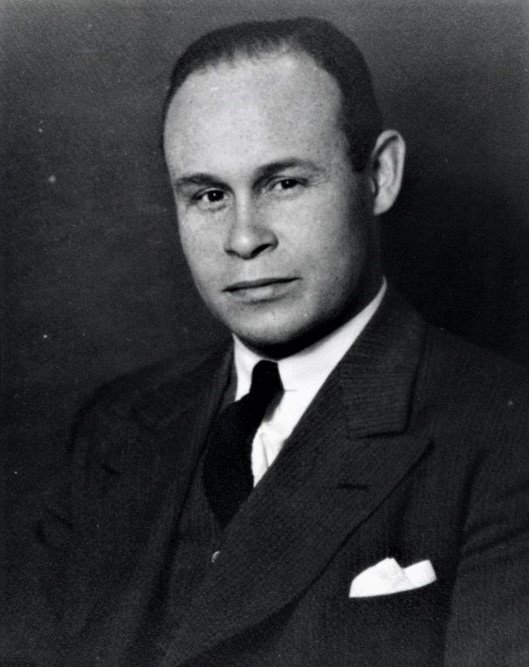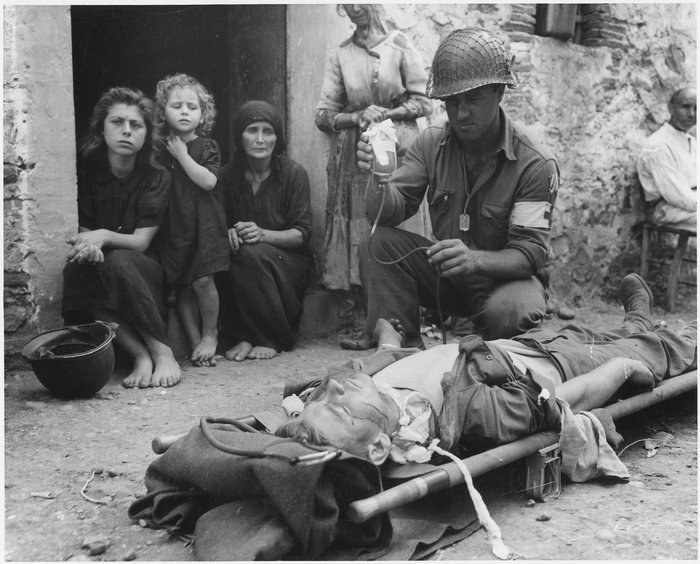"Father of the blood bank" - Charles R. Drew's story
Charles R. Drew was an African American surgeon and researcher who pioneered in the field of blood transfusions and blood storage. Living through a time of extreme racial prejudice, he protested against blood donor segregation and campaigned for better treatment of black doctors. Earning himself the nickname “Father of the Blood Bank” his legacy is still felt to this day, with around 20% of donated red blood cells being given to people with blood cancer.

By Associated Photographic Services, Inc - National Library of Medicine: http://profiles.nlm.nih.gov/ps/retrieve/ResourceMetadata/BGBBCT: Year supplied: ca. 1949Original Repository: Howard University. Moorland-Spingarn Research Center. Charles R. Drew Pap
A scientist and a sportsman
Charles Richard Drew was born in Washington DC in 1904 where he lived with his parents and 4 siblings. The family were extremely close and all the children were all expected to see through their education and become high achievers. Drew was very interested in science and medicine from a young age and was also a keen athlete in school. The death of his sister Elsie during the Great Influenza Epidemic of 1918 was his first experience of deadly disease and inspired him to become a doctor.
Schools in Washington were mostly segregated in the 1920s and the college he attended was predominantly white but did accept some black students. He went on to teach biology and chemistry at a college in Baltimore while also working in their athletics department. After 2 years he had saved up enough to attend medical school in Canada which was more accepting of non white applicants.
A lifesaving discovery
In one of his classes he was shown a blood transfusion; where the patients’ blood was replaced by fresh blood which had been donated by another person. He understood that getting donated blood wasn’t easy as it wouldn't keep for long and this triggered a thought: could this be preserved and used when the patient needed it?
Drew became a teacher at Howard University after graduating from medical school and trained in surgery at their hospital. In 1938 he was granted a scholarship in New York and he was finally now able to explore and study the composition of blood.
Blood is made up of red blood cells, white blood cells, platelets and plasma which all create “whole blood”. Drew discovered that plasma (the liquid) lasts longer than the whole blood. This meant that plasma could be separated and refrigerated and then reconnected with the other parts a week later in a transfusion. Plasma could also be donated to any blood type and this discovery created the first blood bank; where blood from donors could now be stored for when it was needed.
Blood For Britain

Private Roy W Humphrey By Unknown author or not provided - U.S. National Archives and Records Administration, Public Domain, https://commons.wikimedia.org/w/index.php?curid=17327295
Drew was headhunted by British officials during World War II to create a blood bank for their soldiers and civilians. This began a huge operation of recruiting volunteers in America to give a pint of blood where plasma was separated, stored, tested and shipped to Britain by the Red Cross.
This also lead to Drew's invention of “bloodmobiles” which allowed people to drop in to donate in public spaces. The donated plasma could become contaminated very quickly and become deadly to whoever received it; but with Drew’s dedication and meticulous quality control, an amazing 5,500 vials of safe plasma were sent to Britain.
The American Red Cross' Racial Discrimination
America also entered the war in 1941 and Drew became the director of the American Red Cross Blood Bank where he was responsible for creating blood banks for American soldiers abroad. His role here was short lived as US military policy insisted on firstly excluding then segregating blood from black donors. Drew protested that not only was this incredibly hurtful to African Americans, it it was unscientific as plasma is the same for people of all races. Ironically, he himself could not donate to his own creation. Angered by these attitudes, he resigned from this post in 1942 and this policy remained until 1950. Drew returned to Howard University as Head of the Department of Surgery and Chief of Surgery. He was dedicated to training black surgeons and campaigning to get them better access and recognition in the medical world.
Death & Legacy
In 1950 Drew was involved in a car accident and he died from his injuries in hospital aged 45. There are various American schools and medical centres which now carry his name to reflect his love of teaching and learning and to pay tribute to his pioneering medical work.
Blood banks and transfusions continue to be a life saving treatment for cancers, serious injuries and various haematological disorders. Through his dedication and perseverance in the face of adversity, Drew has created a lasting legacy and the lives saved by his discovery are countless.

Photo by LuAnn Hunt on Unsplash

We're making a difference to people's lives
Our research is helping those living with a blood cancer across the UK
